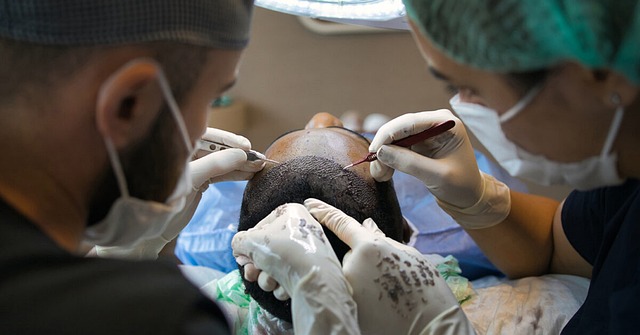Hair loss is a common problem that affects many people around the world. For those who suffer from hair loss, hair transplantation can be an effective solution. Hair transplantation involves removing hair follicles from one part of the scalp and transplanting them into the bald or thinning areas. This procedure can restore hair growth and improve the appearance of the scalp. In this article, we will discuss the various techniques used in hair transplantation.
Follicular Unit Transplantation (FUT)
Follicular Unit Transplantation (FUT) is a technique that involves removing a strip of scalp from the donor area, usually at the back of the head, and dissecting it into individual follicular units under a microscope. These follicular units are then transplanted into the recipient area. FUT is a more invasive procedure than Follicular Unit Extraction (FUE), but it can be more efficient for transplanting large areas of hair.
Follicular Unit Extraction (FUE)
Follicular Unit Extraction (FUE) is a technique that involves extracting individual hair follicles directly from the scalp, using a small punch device. The follicles are then transplanted into the recipient area. FUE is a less invasive procedure than FUT and does not leave a linear scar. However, FUE can be more time-consuming and may require multiple sessions to achieve the desired results.
Robotic Hair Transplantation
Robotic Hair Transplantation is a recent advancement in hair transplantation technology. This technique involves using a computer-guided robotic arm to extract and transplant hair follicles. The robotic arm is programmed to select the healthiest follicles and to transplant them into the recipient area with precision. Robotic Hair Transplantation is a minimally invasive procedure that offers precise results and minimal scarring.
Platelet-Rich Plasma (PRP) Therapy
Platelet-Rich Plasma (PRP) Therapy is a non-surgical technique that involves injecting a patient’s own platelet-rich plasma into the scalp to promote hair growth. PRP therapy can be used in conjunction with hair transplantation to improve the overall results of the procedure. PRP therapy is a safe and effective treatment that can help patients achieve thicker and healthier hair.
Scalp Micropigmentation
Scalp Micropigmentation is a non-surgical technique that involves tattooing the scalp to create the appearance of hair. This technique can be used to cover up scars from previous hair transplant procedures or to create the illusion of thicker hair. Scalp Micropigmentation is a safe and effective procedure that can help patients achieve a natural-looking head of hair.
Conclusion
Hair transplantation is a popular and effective solution for those who suffer from hair loss. There are several techniques available, each with its own advantages and disadvantages. Follicular Unit Transplantation (FUT) and Follicular Unit Extraction (FUE) are the most common techniques, but Robotic Hair Transplantation, Platelet-Rich Plasma (PRP) Therapy, and Scalp Micropigmentation are also effective options. If you are considering hair transplantation, it is important to consult with a qualified professional to determine which technique is right for you.

